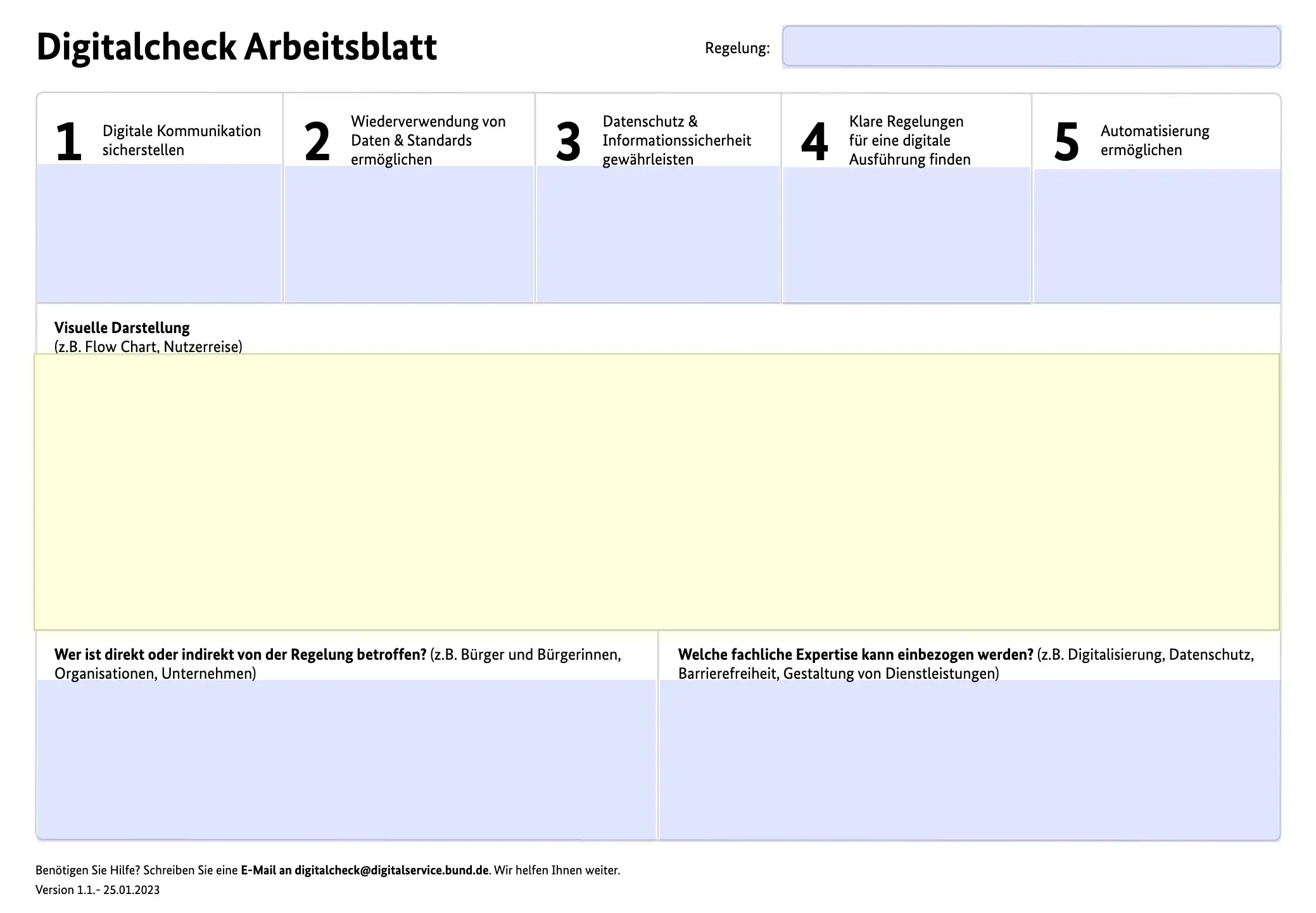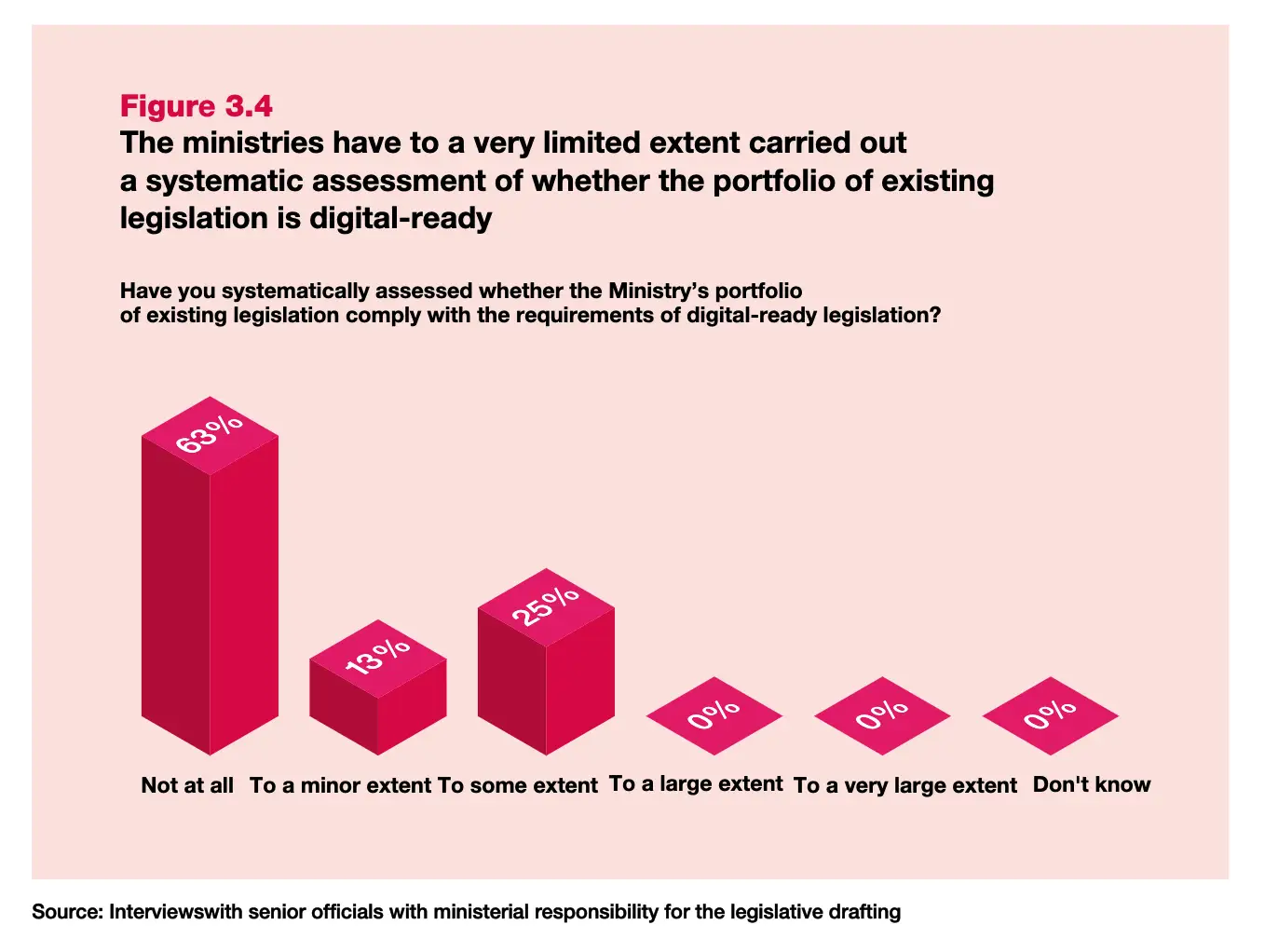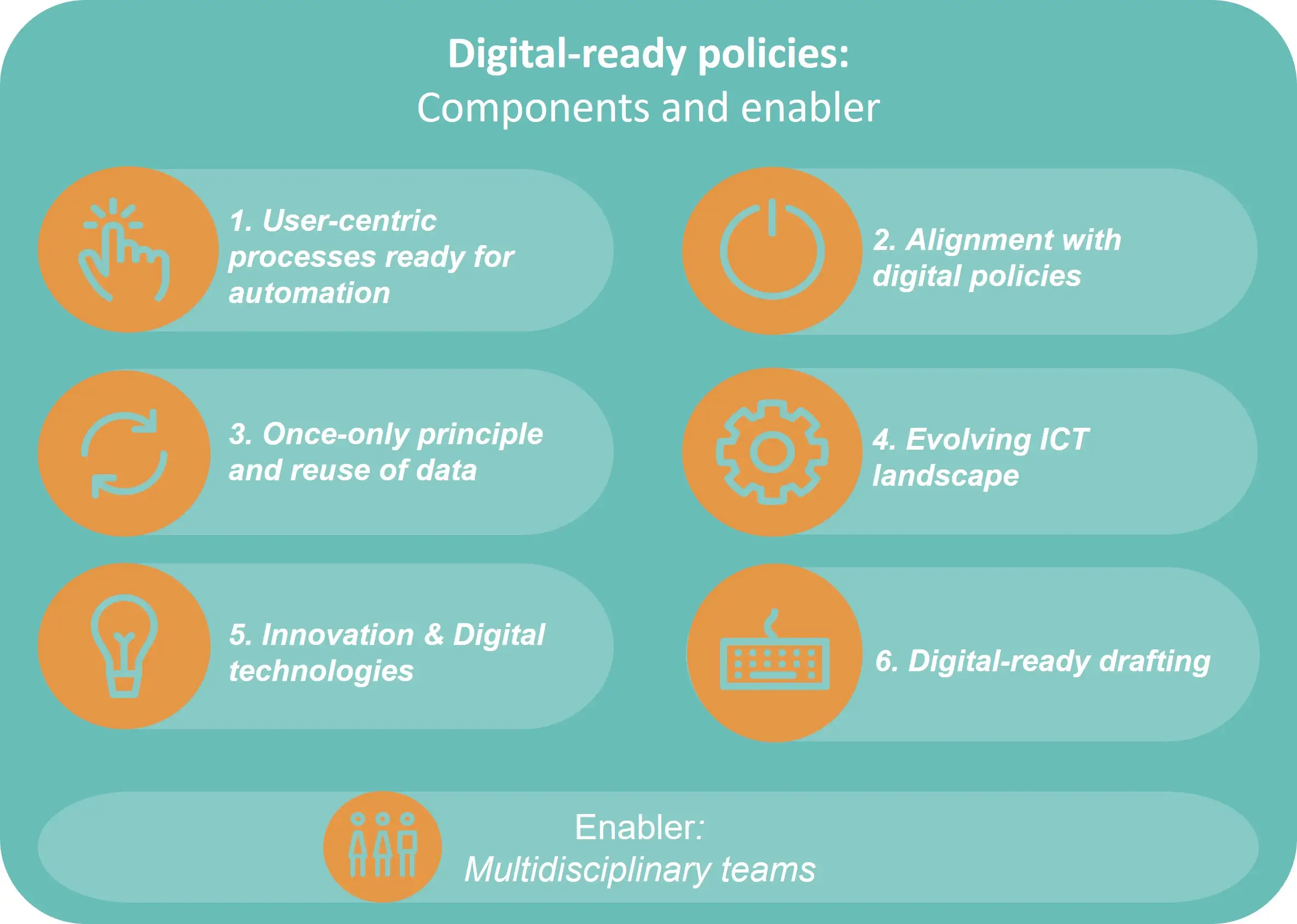Overview and Critique: Principles for Digital-Ready Legislation

As you delve deeper into digitalizing government services, two realities become clear: the complex process of transitioning from manual paper-driven processes between multiple government agencies requires a culture of adaptability that administrations often lack. Additionally, the sheer number of government services involved makes it incredibly likely that a backlog of manual tasks will remain for an extended period of time.
New policies are being released every day, leading to laws and regulations that can be difficult for government agencies to keep up with. As a way of attempting to reduce the backlog of analog legislation and its associated public services, the EU, Danish, and German governments have launched an initiative to create digital-ready legislation. The idea is to think about the digital implications of a law before drafting a policy in order to increase efficiency and effectiveness when it comes time to implement those laws digitally.
Digital-Ready Legislation Standards: Denmark, Germany, and the EU
Denmark's 7 Principles
- Simple and Clear Rules: Legislation must be simple and clear to be easy to understand and administer for citizens and businesses.
Sadly, legislation and the law process are often difficult for citizens to comprehend. History has revealed that digital legislation has become rather intricate, leaving one to question how digitalization may bring about more clarity. The digitization of public services can be an immensely helpful tool in contextualizing the influence of the law on a person's specific circumstance. For example, using a 'workflow' approach could guide them through an application, clarifying how certain laws may impact their individual situation more conveniently than manual forms. - Digital Communications: Legislation must support digital communication with citizens and businesses.
Comprehensive communication and implementation of policies are areas in which governments often fall short. Legislation is often simply dropped as PDFs in a download section without further explanation or clarification. How can governments make laws easier to understand, beyond just providing plain language explanations of their details? To begin, digital legislation should be communicated much more openly throughout its development, such as making all changes to its contents available for review along the way. - Enable the Automated Processing of the Cases: The legislation should support that its administration can be digitized fully or in part, taking into account the legal certainty of citizens and businesses.
The concept of modernizing the law to facilitate efficiency and transparency through digitalization is commendable. However, converting paper documents into digital data isn't enough. Too often this just leads to exchanging PDFs manually, rather than services that are truly digitalized and automated processes. - Coherence Across Government - Homogeneous Concepts and Reuse of Data: Concepts and data must be re-used across government bodies. If data is already available that matches the terms used in the legislation, the legislation should be designed to make it possible to use this data.
As governments strive to provide better services, it is becoming increasingly necessary for them to adhere to data standards. These standards should be made public as much as possible, allowing businesses the opportunity to use the public data to provide additional services. Unfortunately, I have seen few initiatives that really make these standards publicly available. - Safe and Secure Data Handling: Technical solutions need to be constructed in such a way that all levels of the administration support secure data management and that transparency is ensured in public data management.
Policy makers must also take into account the data needs of citizens. Data minimalism should always be a priority in order to safeguard individual privacy; however, some government agencies unfortunately have an insatiable appetite for obtaining information rather than responding to the citizen's data needs. - Use of Public Infrastructure: Public authorities shall use existing public IT infrastructure to ensure maximum re-use and coherence across government domains.
Government should decide whether to build their own digital public infrastructure or rely on existing cloud services and payment gateways. Specific applications should not be built for each individual law; instead, existing solutions should be adapted to fit new legislation. - Prevent Fraud and Error: The legislation must be designed to allow for the effective application of digital solutions for control purposes.
It is clear that the digital legislative interface requires more stringent security measures than traditional ones, which makes it somewhat ironic to argue for its own principles.
In the Danish government's recent evaluation of their approach, one number stood out: 63 percent of senior officials with ministerial responsibility for legislative drafting stated there was no systematic assessment, while the rest stated it had only been done to a small or some extent. This underscores the challenge governments face when trying to modernize existing rules and services and also digitalize new ones from the outset.

5 Principles for DigitalCheck in Germany
The German government has made recently a similar set of 5 principles called DigitalCheck that should from now on applied tor all new government regulation.
- Ensure Digital Communication
- Reuse of Data & Standards
- Ensure Data Privacy & Information Security
- Find Clear Rules for Digital Execution
- Enable Automation
The German government employed nearly identical standards in an effort to pre-empt the challenges that accompany digitalizing public services. These guidelines are intended to maximize efficiency, so should the government be more willing to work around pre-existing bureaucracy? It is not difficult to picture how these principles are at odds with a still largely manual-based administration in Germany. Regrettably, no measures have been taken to ensure user-friendly services.
The EU Approach to Making Good Digital-Ready Policies

User-Centric Processes Ready for Automation
It is encouraging to see that the EU takes into account user-friendliness when approaching automation. Automating government should result in improved services for citizens. If an algorithm determines welfare levels, this might save the government work, but could potentially lead to more serious issues for society.
Alignment with Digital Policies
The European Union also emphasizes the importance of digital policies. For example, the new EU Artificial Intelligence Act will have a great effect on how digital laws are created. This consistency is missing in other regulations.
Once-Only Principle and Reuse of Data
This rule is very concrete compared to the generic terms usually seen in Denmark about "Coherence across government." On the other hand, Germany ignores this 'only once' principle in its review list even though it is a regular approach for German public sector IT systems.
This principle insists that citizens must only provide a single piece of information, while also striving to reduce the amount of duplicate data contained within government IT systems, which is still an ongoing issue.
Evolving ICT Landscape
This EU approach is similar to the public IT infrastructure plan from the Danish government. The idea is to avoid reinventing the wheel by creating duplicate software. It's now widely accepted that open source software collaboration is key for successful government projects, but it still may take some time until governments fully embrace this type of collaboration.
Innovation & Digital Technologies
Exploiting the newest technological advances can be tempting, as we tend to believe that AI or Blockchain may provide even better solutions. However, it is often enough to rely on a modern digital toolset without getting into more complex, fancy developments.
Digital-Ready Drafting
The name of this concept is slightly deceiving as the main idea is to develop rules that are clear and precise enough for quick conversion into a digital format. This is part of the concept of Rules as Code, which means laws need to be able to be programmed in software. For example, new tax laws can be quickly integrated into tax advising programs. The OECD published an interesting paper discussing this approach titled: Cracking the Code: Rulemaking for Humans and Machines by James Mohun and Alex Roberts.
What Is Missing?
The principles of digital-ready legislation are certainly a step forward, as they provide public servants with instructions for their laws. A key concept is that the law be designed with digitalization in mind in order to speed up implementation and increase long-term efficacy.
However, two major areas have been overlooked: user focus and data feedback loops for better policy decision-making. A digital-ready legislation should come from the perspective of the end user; how can citizens and businesses follow the rules or acquire benefits in the most straightforward way possible? The clarity of laws should benefit citizens by providing easy-to-follow digital services that are executed swiftly.
Furthermore, these principles don't address execution, performance, or inclusion measures - metrics which could tell whether or not the law has actually been adopted. It would be useful to include feedback systems that measure which parts of society have used the online application process, what hurdles exist, and how quickly a benefit reaches its intended recipients. Many online processes are not widely understood and can be time-consuming to utilize, while statistical routines can take a long time before the results are relayed back to those in power. It would be advantageous if this feedback were shared openly, so that government representatives could work together with researchers and members of the public to create more effective laws.